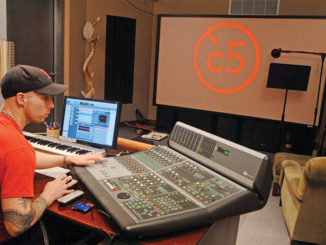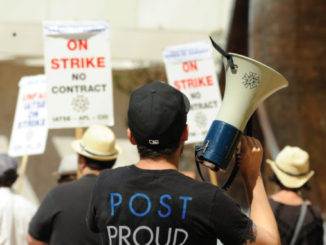
by Barry Ross

A Southern California native, I worked with my father from the age of six prototyping electronic circuitry for his government projects, since he only had a small engineering team at his daytime government employer. At about age 10, I fell in love with tape recorders and started recording everything I could.
By junior high school, my passion was managing stage crews (lights, sound, sets) and working for $3 an hour in the wee hours of the night in Hollywood, building sound-mixing consoles and parametric equalizers. I also volunteered part time to provide lighting and sound services for a small, 35-seat garage theatre in Van Nuys where Mary Tyler Moore, Carol Burnett and many other Hollywood elite practiced their art and staging techniques. I really loved tape recording any and all performances, and I soon became hooked! Though I desired a steady income…
I began working as an electronics technician with some very cool but boring local electronics companies. While reading REP, the only Pro Sound magazine back then, I came across a job that fit me––managing a service department for a pro audio dealer that was designing, building and maintaining recording studios and discos. I got the gig, finally embarking on a real, paying sound career! During the next four years, I had the opportunity to build a specialized tape machine for Stevie Wonder, install a new mixing console, and work on a few album projects with Ray Charles and other great artists of that time period.
Realizing I needed more challenge and still wanting to get closer to studio tape machines, I accepted a job as director of technical services for the Japanese tape recorder manufacturer Otari in San Francisco. I managed quality control of the studio products and the US dealer service network. I also managed research and development for a few years, traveling internationally to teach tape recorder maintenance and creating product design in Japan. It was hard work and lots of late nights drinking sake and singing Karaoke! In 1989, after eight years with Otari, I started to see the light at the end of the tape recorder tunnel, so I sweet-talked my wife to moving back to Los Angeles.
Fox was one of the most stressful but exciting positions I had ever encountered. I quickly learned that a film lot sound engineer is technically responsible for not only sound and picture issues on all of post-production (editorial, ADR and Foley, as well as dub and scoring stages) and some production stages, but also most film and tape transfer facilities, screening rooms, etc.
In LA, while my wife opened the first office for Avid Technology in Burbank in 1990, I started with WaveFrame Corp. as a field engineer. I was pretty much on call 24/7 for Columbia Studios. This was the beginning of electronic sound design and linear editorial systems used on film lots. And did I learn a bunch! Although after nine months of Dallas and Knots Landing, I was ready for a break. Otari invited me back to run the LA office technical department and to commission the first Otari analogue film mixing consoles at Skywalker South.
After commissioning six huge film-mixing consoles and spending lots of time on film lots, I was secretly interviewed by 20th Century Fox for a position which was undisclosed for four months. Finally, I told them I would need to start charging them for all the time they had been spending with me. They didn’t think this was too funny, though they did promptly hire me as their chief sound engineer. I became a union member (Local 695 at the time) in order to manage the sound engineering staff. Fortunately, I had the 100-plus hours of film and TV experience to qualify.
Fox was one of the most stressful but exciting positions I had ever encountered. I quickly learned that a film lot sound engineer is technically responsible for not only sound and picture issues on all of post-production (editorial, ADR and Foley, as well as dub and scoring stages) and some production stages, but also most film and tape transfer facilities, screening rooms, etc. Sound engineering tasks also included designing and taking part in the building or refurbishing of any additional facilities (including fixed, mobile and temporary) as required. While at Fox, I also assisted the new Fox network move onto the studio lot and other studio re-development projects, including the Newman Scoring Stage, which was especially exciting because of the long history of this stage.
After Fox, I became director of sound engineering at Sony Pictures Studios, where I enjoyed working with a large sound department filled with some of the best sound editors, Foley artists and sound mixers in the world. And yes, this included my staff of great sound engineers, who, like myself, adapted their longtime knowledge garnered from the music industry into great advancements in film and TV sound.




